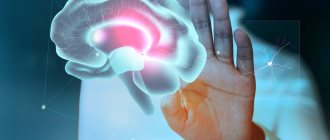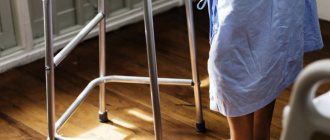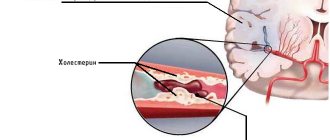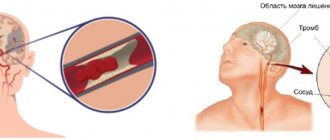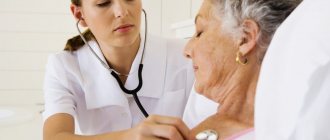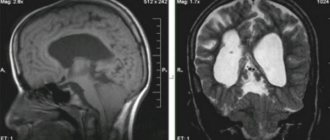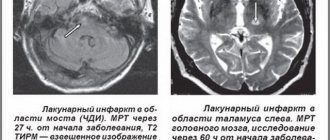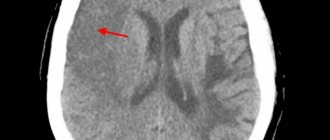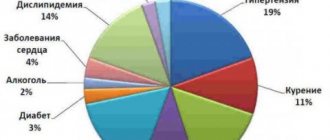American neurosurgeons Joseph Bogen And Philip Vogel, and neuropsychologist Roger Sperry in the mid-twentieth century it was established that the right and left hemispheres of the brain perform different cognitive functions. However, the results of their research were misunderstood by many, which led to the belief that all people have a dominant one of the brain hemispheres: the right is responsible for logic and prudence, and the left for imaginative thinking and creativity.
In fact, all people use both the right and left hemispheres of the brain to almost the same extent. However, each of them provides different principles for the perception of reality, the organization of speech and color recognition.
Article on the topic Living supercomputer. Why does the brain need water and why is it more active at night?
Perception of reality
The right hemisphere perceives information as a whole, ensures the perception of reality in all its diversity and complexity, in general with all its constituent elements. It works through many channels at once and is capable of reconstructing the whole from its parts, in particular, it is responsible for the perception of location and spatial orientation.
What is the left hemisphere of the brain responsible for?
More details
Symptoms of decreased brain activity in the right hemisphere
People whose right side of the brain is poorly developed have difficulty in creative endeavors - drawing, inventing stories, writing, learning to play musical instruments. With serious damage to the brain structures on the right, a person’s health and quality of life deteriorates significantly. Possible symptoms:
- Doesn't recognize familiar people.
- Can't find the house.
- Loses touch with reality.
- Loses the ability to navigate in space and time.
Many people want to activate the right hemisphere of the brain, viewing a task as a way to unleash their own creativity. Special exercises will help develop the parts of the brain in the right hemisphere to make life full and rich, as if filled with bright colors.
How does the right hemisphere of the brain work in left-handed people?
According to sociologists, from 5 to 15% of the world's inhabitants are left-handed. Scientists have found that their use of their left hand as a leading hand is associated with the peculiarity of the functioning of their brain. It is believed that the right hemisphere of the brain of these people is responsible for those tasks that the left hemisphere of right-handers copes with, and vice versa. This is partly true, but there are also some peculiarities. For example, when moving the dominant hand, the brain of right-handers is activated locally in the left hemisphere, while in left-handers it is activated in both. In a state of quiet wakefulness, the brain hemispheres of right-handers work more synchronously than those of left-handers. But during the transition from wakefulness to sleep, the picture changes: in right-handed people, the synchronicity in the work of the hemispheres is disrupted, and in left-handed people it changes slightly.
Ischemic stroke
There are hemorrhagic and ischemic strokes.
Ischemic stroke (cerebral infarction) develops when the lumen of an artery that supplies a particular area of brain tissue is blocked. An embolus or thrombotic masses can clog the arteries. The artery can also spasm, be compressed from the outside, or narrowed by atherosclerotic plaques.
People over 60 years of age who suffer from the following diseases are most susceptible to the disease:
- long-term hypertension;
- systemic atherosclerosis;
- diabetes mellitus;
- heart attack;
- cardiac pathologies (atrial fibrillation, rheumatic defects and artificial valves).
The main causes of stroke in the right hemisphere of the brain are listed above. At the same time, pathology can develop for other, more rare reasons, in people of different age groups. Among them:
- cervical osteochondrosis in combination with vertebral artery syndrome;
- blood diseases accompanied by a tendency to form blood clots;
- poisoning with certain substances;
- taking hormonal contraceptives;
- thrombophlebitis and thrombosis of the venous system of the extremities;
- prolonged spasm of cerebral vessels;
- compression of brain arteries by tumors;
- systemic connective tissue pathologies and vasculitis: Kawasaki syndrome, Takayasu disease.
Expert opinion
Author: Andrey Igorevich Volkov
Neurologist, Candidate of Medical Sciences
When a stroke is localized in the right hemisphere, motor disturbances appear on the left side. This may be hemiparesis or paralysis of the left arm or left leg. In addition to motor disorders, a stroke on the right side gives a typical clinical picture: loss of coordination, visual disturbances, loss of sensitivity. In acute conditions in the arteries of the brain, general cerebral symptoms are also characteristic: dizziness, loss of consciousness up to coma, headache, central vomiting.
The clinical picture only makes it possible to suspect a stroke. At the same time, at this stage it is important to take urgent measures to save the patient’s life. Inpatient treatment is required.
It seems possible to accurately determine the location of a cerebral stroke only with the help of neuroimaging tools - MRI, CT. This type of diagnosis is carried out at the Yusupov Hospital. Once the diagnosis is confirmed, drug therapy is started. At the same time, the patient is being rehabilitated. There is a team of specialists, which includes a neurologist, physiotherapist, physical therapy doctor, speech therapist, occupational therapist, and psychologist.
Treatment
A patient who has suffered a stroke requires emergency care and hospitalization. Numerous studies of this disease confirm that treatment carried out in the first three days is most effective, since the activity of nerve cells surrounding the lesion is high.
Neurologists at the Yusupov Hospital begin treating the consequences of a stroke after a comprehensive examination of the patient. The treatment and rehabilitation programs developed by our specialists are based on the principle of the individuality of each patient, however, if the blood supply to the brain is impaired, the following measures are mandatory:
- monitoring of cardiac activity and blood pressure;
- prevention of early contractures, pneumonia;
- ensuring the required level of blood oxygen saturation and removing excess carbon dioxide;
- maintaining homeostasis - equilibrium of the internal environment;
- monitoring the condition of the intestines and bladder;
- swallowing control;
- skin care and prevention of bedsores.
Treatment of patients after pneumonia involves the use of drugs and non-drug methods. To take into account contraindications, cardiologists, neurosurgeons and resuscitators take part in drawing up the treatment program.
Drug therapy after a stroke involves the use of the following drugs:
- antihypertensive drugs for high blood pressure;
- osmotic diuretics and dexazone are used for cerebral edema, as well as to prevent increased intracranial pressure;
- anticoagulants, which include heparin, help control blood clotting;
- antiplatelet agents (trental, beta blockers, calcium antagonists) are used to identify signs of insufficient blood supply;
- drugs with a neuroprotective effect are used to restore neurons.
The Yusupov Hospital creates comfortable conditions for every patient. After a stroke, patients need professional care, which is provided by the staff of the neurology clinic:
- introducing fluids and nutrients into the body;
- turning the patient from one side to the other every 2 hours;
- performing cleansing enemas once every two days;
- wiping the skin every 8 hours with camphor alcohol;
- cleaning the nasopharynx and oropharynx using suction and then rinsing them.
Forecast
Right hemisphere ischemic stroke is a disease associated with high mortality. However, the achievements of modern medicine allow neurologists to fight for the life of each patient and improve its quality. The prognosis for ischemic right-sided stroke depends on factors such as the timeliness and correctness of first aid, the age of the patient, treatment and rehabilitation tactics, and the patient’s readiness.
Restoring functions lost due to a stroke lasts up to a year. However, activities carried out in the first trimester are most effective. There are cases where specialists are unable to restore speech in left-handed people with a right-sided stroke, while other functions are completely restored.
The patient and his loved ones must be prepared for the fact that rehabilitation measures are delayed for several years. During this period, it is important to follow your doctor’s orders, do home exercises, and attend procedures. At the Yusupov Hospital, relatives are trained in the basics of care and interaction with the patient.
The rehabilitation programs implemented at the Yusupov Hospital are highly effective, this conclusion can be drawn from research conducted by neurologists. Some patients who underwent treatment and rehabilitation were able not only to return to a full life, but also to continue working. The achievement of other people after rehabilitation was that they were able to take care of themselves and communicate with others.
Treatment and rehabilitation after ischemic stroke of the right hemisphere is carried out in accordance with international standards. The medical staff provides a wide range of services and creates conditions for the recovery of patients. To schedule a consultation or get answers to your questions, you can contact the Yusupov Hospital by phone.
Causes of development of cerebrovascular accidents
The cause of the development of right-sided ischemic stroke is the cessation of blood supply to the hemisphere. This condition occurs due to blocking of the lumen of the vessel by an atherosclerotic plaque, embolus or thrombus. The area of damage directly depends on the size of the lumen of the blood vessel.
Ischemic stroke of the right hemisphere is a studied disease. The main reasons for its development are:
- the age of the patient, the risk of developing the disease is higher in older people;
- gender - up to 80 years of age, the likelihood of ischemic stroke is higher in men, but after this age the opposite trend is observed;
- chronic stress, increased anxiety;
- burdened heredity, this reason is confirmed by numerous studies devoted to the issues of vascular accidents in people whose family members have suffered a stroke.
Doctors identify causes that can be corrected in order to prevent ischemic stroke:
- high blood pressure;
- irrational lifestyle and use of toxic substances, overeating;
- increased body weight;
- taking combined oral contraceptives;
- atherosclerotic vascular lesions.
Primary prevention of ischemic stroke is aimed at correcting lifestyle, increasing human activity, and reducing body weight.
Rehabilitation
The implementation of the rehabilitation program begins after the patient’s condition improves. In the rehabilitation clinic, patients interact with speech therapists who offer exercises to gradually restore written and spoken language skills. Physiotherapeutic procedures and massages are carried out by professional rehabilitation therapists. Exercise therapy instructors at the Yusupov Hospital restore motor function through therapeutic exercises, physical education and kinesitherapy.
Stroke rehabilitation programs may include the following:
- magnetic therapy;
- laser therapy;
- acupuncture;
- kinesio taping;
- Voita therapy;
- massage sessions;
- treatment by position and movement.
The rehabilitation clinic of the Yusupov Hospital has modern technical equipment, which, combined with the knowledge of specialists, ensures effective restoration of functions after an ischemic stroke on the right side of the brain.
Functions of parts of the brain
The brain consists of five sections:
- Anterior - cerebral hemispheres. They are divided by deep grooves into the following lobes: frontal (motor center), parietal (sensitivity center), temporal (auditory zones) and occipital (visual zone). The areas of taste and smell are located in the temporal and frontal lobes. The centers of memory and the formation of unconditioned reflexes (work skills) are located in associative zones, which are located in all lobes of the gray matter of the brain.
- Intermediate - thalamus (visual thalamus), hypothalamus, geniculate bodies, reticular formation.
- Middle - quadrigeminal (centers of visual and auditory analyzers), cerebral peduncles (place of passage of ascending and descending nerve fibers).
- Posterior - cerebellum (coordination of movements) and the pons (connection between parts of the central nervous system: spinal cord, brain, cerebellum. It contains the nuclei of cranial nerves - V, VI, VII, VIII).
- The medulla oblongata contains important regulatory centers:
- breathing;
- heart activity;
- body temperature;
- vascular tone (change in blood pressure);
- protective reflexes - sneezing, coughing, tearing, blinking.
Hemorrhagic stroke
Hemorrhagic stroke of the right hemisphere of the brain has a worse prognosis than ischemic stroke and is most common in people aged 40-60 years.
There are the following causes of hemorrhagic stroke:
- blood diseases characterized by increased bleeding (hemophilia, coagulopathy);
- pathological changes in cerebral vessels in hypertension caused by prolonged high blood pressure. In this case, the vessels lose their elasticity and rupture, which leads to hemorrhages;
- overdose of blood thinners;
- cerebral atherosclerosis;
- vasculitis - inflammatory lesions of blood vessels in the brain.
